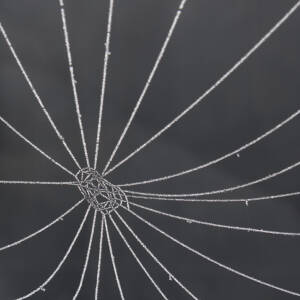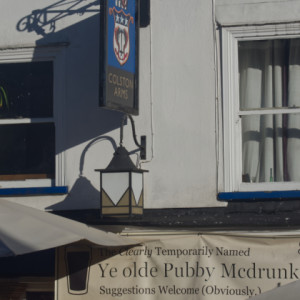'You can't rewrite history'
False. We can't change what happened but we can reinterpret it in the light of new knowledge and new ideas. According to History written in the 19th century and even History taught in British universities until the 1960s, 95% (approx) of the population of the world was male, white, wealthy and involved in politics, war or amassing more money than they needed. Because there is much less recorded of the lives of the other 5% (approx) it's been a struggle over the last 60 years to re-right history. But good historians try (it delights me that Blipfoto being kept by the British Library means that our own mundane lives and concerns will be part of the history of the future) and while in Bristol I wanted to understand a little more of part of that struggle.
This is the statue of Edward Colston, one of many white English men who sold human beings into slavery. Its toppling 18 months ago made news across the world and it's still controversial in Bristol. The statue is now part of a temporary exhibition in MShed, an excellent museum about Bristol life, people and places.
I came to see the exhibition yesterday then walked from where the statue used to stand to where it was thrown into the harbour at Pero's Bridge. It took me, not rolling a heavy statue, 7 minutes. Getting it to the water must have been hard work. The people who did that meant it.
What I didn't know, and I assume most of the rest of the world didn't know, was that there have been campaigns about the commemoration of Colston and his statue for a very long time. Its plaque, still on the plinth in the centre of Bristol, reads, 'Erected by citizens of Bristol as a memorial to one of the most virtuous and wise sons of their city.' 'Virtuous and wise' because while he was alive he spent some of the vast profits he made from trafficking black human beings on schools, almshouses, hospitals and churches for white people and in his will he left the equivalent of £16m to charity.
But even this plaque is distorted history. Despite his 'virtue' and 'wisdom', the 1893 appeal to citizens didn't raise enough to fund a statue so a considerable part of the cost was paid by the Society of Merchant Venturers.
Who they?
A guild of merchants founded in Bristol in the 13th century to promote their own interests. The Society funded 'explorations' and became influential in civic life and its members were active in the English colonisation of North America. By 1552 the society had a monopoly on Bristol's sea trade and it remained in effective control of Bristol's harbour for the next 250 years. In the seventeenth century it promoted trade protectionism leading to restricting exports from Ireland and banning imports into Ireland from anywhere except England. It persuaded Parliament to open the slave trade to all 'subjects of the Crown', overcoming London’s slaving monopoly. During the eighteenth century one quarter of the individual members of the Society were directly involved in the slave trade. Including Edward Colston.
This Society still exists. It now promotes itself as a charitable organisation but it continues to have considerable influence in Bristol.
There have been protests around the Colston statue and the many other places in Bristol that bear his name (see extra) since the 1990s and in 2018 Bristol City Council decided to add a second plaque, to 'contextualise the statue' by summarising Colston's role in the slave trade. The wording was agreed and a new plaque was cast:
'As a high official of the Royal African Company from 1680 to 1692, Edward Colston played an active role in the enslavement of over 84,000 Africans (including 12,000 children) of whom over 19,000 died en route to the Caribbean and America. Colston also invested in the Spanish slave trade and in slave-produced sugar. As Tory MP for Bristol (1710-1713), he defended the city's 'right' to trade in enslaved Africans. Bristolians who did not subscribe to his religious and political beliefs were not permitted to benefit from his charities.'
But Bristol's controversial mayor, Marvin Rees, vetoed its installation in March 2019. It is alleged that the Society of Merchant Venturers had disputed the wording. Rees promised a rewording that has never materialised.
This was the undercurrent to Bristol's George Floyd protests on 7 June 2020. Years of frustration and anger meant that a small group of protestors seized the opportunity to topple the statue, graffiti it, roll it to Bristol harbour then drop it into the water. Four days later Bristol City Council recovered it and since then it has been on display as part of a consultation about its future.
The consultation has finished but the results won't be published (though the quote above the statue in my blip is one of many from the survey that were projected onto the wall) until the end of the trial for criminal damage of four of the protestors that started on 13 December.
I'm not a Bristolian and I haven't contributed to the survey, but should this statue be re-erected? No - statues are for people we admire. Should it be in a museum? Yes - I've learnt a lot from seeing it and reading about some of the history that remained unwritten for too long.
(If anyone wants to challenge any of my facts or biases, please do - that makes better history.)
Today I visited MShed again for the the Wildlife Photographer of the Year exhibition (fantastic - find somewhere it's on near you and go and look at that spider) and afterwards I went back to the Colston story to contemplate it a bit more.
Some of the history in real time.
The MShed exhibition ends on Monday but for the time being some of it is also online.
.....................
Too many words today, but I also want to record another Blipmeet - I was really pleased to spend some time with Clazel who was temporarily in Bristol and who was going on to see the Palm Temple having seen my picture, just as I went having seen RobBris50's. I love our Tribe!


Comments
Sign in or get an account to comment.


